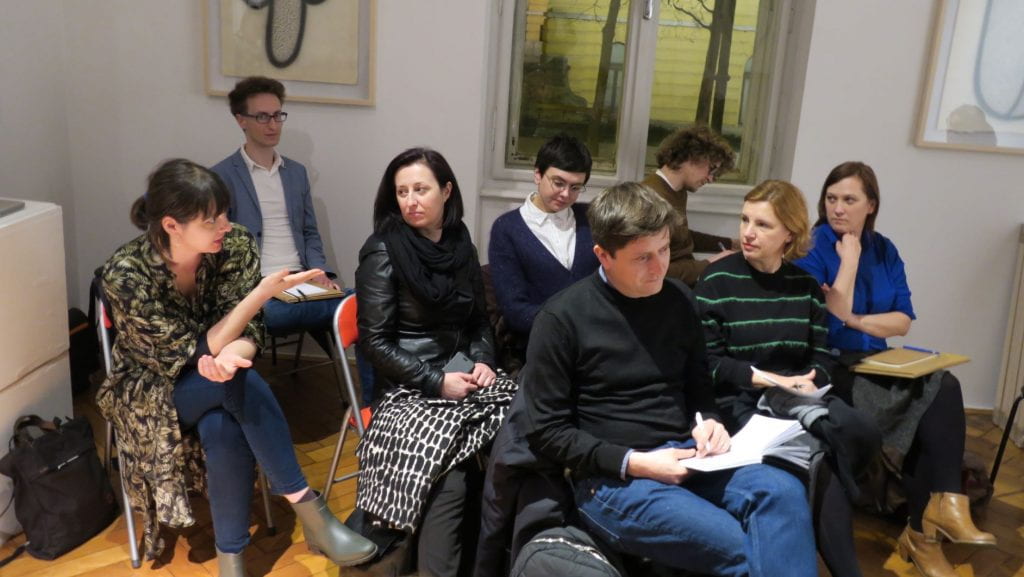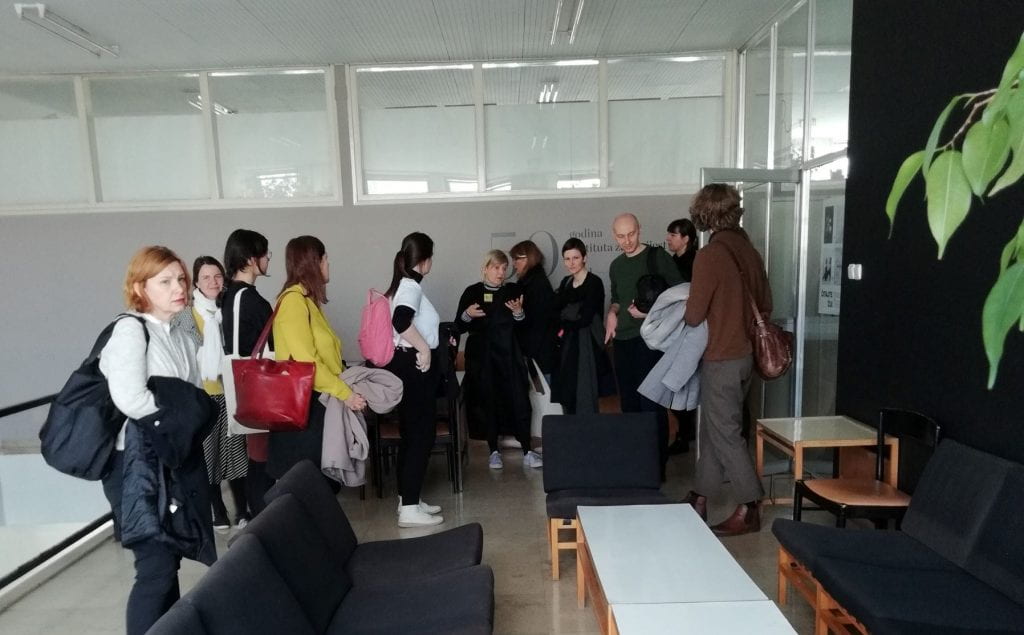Setting the Confrontations Agenda
By confrontations, on 29 April 2019
 The first session of Confrontations kicked off with a circle of introductions of this select group of scholars of East European art history, coming together at the beginning of an ambitious programme of collective research. Hosted by the Museum of Contemporary Art Zagreb, the first gathering was an opportunity to introduce the agenda of Confrontations over the coming years, with the aim to uncover the contested histories of the art of the first and last decades of the socialist period across the diverse art scenes of Eastern Europe.
The first session of Confrontations kicked off with a circle of introductions of this select group of scholars of East European art history, coming together at the beginning of an ambitious programme of collective research. Hosted by the Museum of Contemporary Art Zagreb, the first gathering was an opportunity to introduce the agenda of Confrontations over the coming years, with the aim to uncover the contested histories of the art of the first and last decades of the socialist period across the diverse art scenes of Eastern Europe.  Anticipating from the outset the complexity and potential irreconcilability of certain positions in contested art historical evaluations, the participants were invited to confront their views through a symbolic Tug of Art History. The question that saw the group take the most opposing positions indicatively was whether abstract art could be seen as a propaganda tool of the socialist state. Intended as a gesture to establish a safe environment for the expression of discordant points of view, this group exercise was also an indication of the objective of Confrontations to activate the potential of ‘sensuous scholarship’ through an embodied art history in which researchers are immersed in direct experiences, exchanges and encounters with the objects of study in situ.
Anticipating from the outset the complexity and potential irreconcilability of certain positions in contested art historical evaluations, the participants were invited to confront their views through a symbolic Tug of Art History. The question that saw the group take the most opposing positions indicatively was whether abstract art could be seen as a propaganda tool of the socialist state. Intended as a gesture to establish a safe environment for the expression of discordant points of view, this group exercise was also an indication of the objective of Confrontations to activate the potential of ‘sensuous scholarship’ through an embodied art history in which researchers are immersed in direct experiences, exchanges and encounters with the objects of study in situ. 
 The first group seminar vividly illustrated the plurality and wealth of approaches in response to the task of proposing their own working definition of East European art history. As we went around the table, it was clear that everyone had interpreted the brief set out in advance by the convenors of Confrontations differently. In that sense, attempts to define our research area ranged from historicising the question of East European art, either relegating it to the pre-1989 state-socialist period or conceiving it as a post-1989 construct, to putting forward theoretical or linguistic distillations of the field. Also voiced was the notion that focusing on Eastern European art could be a strategic choice, in terms of pursuing particular ethical or decolonising agendas with regard to art history.
The first group seminar vividly illustrated the plurality and wealth of approaches in response to the task of proposing their own working definition of East European art history. As we went around the table, it was clear that everyone had interpreted the brief set out in advance by the convenors of Confrontations differently. In that sense, attempts to define our research area ranged from historicising the question of East European art, either relegating it to the pre-1989 state-socialist period or conceiving it as a post-1989 construct, to putting forward theoretical or linguistic distillations of the field. Also voiced was the notion that focusing on Eastern European art could be a strategic choice, in terms of pursuing particular ethical or decolonising agendas with regard to art history.

(MRF)
 Close
Close























